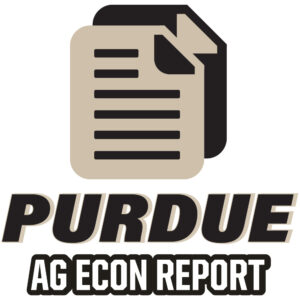Will 2024 bring a new Farm Bill?
January 16, 2024
PAER-2024-03
Roman Keeney, Associate Professor of Agricultural Economics
Background
One year ago, this column discussed factors that would complicate the drafting and passage of new legislation replacing the 2018 Farm Bill before its expiration. Prime among those factors was the 2022 election yielding a division in the Congress with Democrats holding the Senate and a new Republican majority in the House of Representatives.
As expected, conflict on spending issues dominated the economic policy debate in 2023. The first clash was over raising the debt ceiling so that the US could continue to meet spending obligations. A last-minute deal was struck in July to avert a default. The debt ceiling deal brushed up against the farm bill debate with its inclusion of changes to SNAP work requirements designed to reduce rolls and reduce spending. While much of the first half of the year was complicated by debt ceiling negotiations, the second part of the year was dominated by the appropriations process. Government shutdowns were averted with two rounds of continuing resolutions. The first of these triggered a change in Republican leadership in the House and in November a second continuing resolution was passed extending the debate on federal spending into early 2024. As part of that November continuing resolution, the 2018 Farm Bill had its termination date extended to September 30, 2024 with no changes to its functionality.
Issues to be resolved by a 2024 Farm Bill
In May of 2023, the Congressional Budget Office (CBO) published the spending projections that serve as the baseline budget for a replacement farm bill. As expected, those numbers indicated that continuing the 2018 Farm Bill forward for ten years would cost more than $1.4 trillion with 84 percent of that being claimed by nutrition programs. Updated total federal spending estimates in May projected increasing deficits for the ten-year horizon eventually raising to nearly 7% of GDP. The prominence of federal spending cuts in the 2023 debt ceiling and budget battles indicates that we should expect the projected cost of the farm bill to feature prominently when deliberations begin in agricultural committees this year.
Farm Bill priorities remain much as they were one year ago. Being allowed to spend the full baseline amount is imperative to meeting the multiple priorities of a large omnibus food and agriculture package. A number of interest groups were advocating farm bill changes that follow the Inflation Reduction Act’s lead on favored climate smart agriculture. Farm production, finance, and risk management groups all have keyed on maintaining the current crop insurance model. Concerns about the performance of direct farm payments delivered through the Price Loss Coverage (PLC) and Agricultural Risk Coverage (ARC) in the face of inflated output and input prices have marked the reference prices used in those programs as a key area that could divide farm and conservation groups. Finally, the continued marriage of nutrition spending with farm income and agricultural conservation in a large omnibus bill is viewed as necessary to maintaining the broad bipartisan support that has been the hallmark of past farm bill passages.
Potential outcomes
In sum, we have a host of priorities for this legislation that would likely require all the projected spending in a political climate where the size of government spending has become a primary point of conflict. New farm legislation is unlikely to come to the fore ahead of some resolution to the fiscal 2024 spending bills. It is possible that some changes to mandatory spending programs in the 2018 farm bill (e.g. crop insurance premium subsidies, allowed acreage in the CRP, or size and eligibility of SNAP benefits) could be brokered as part of the budget process as was seen in the most recent debt ceiling negotiation. It would be more likely that the spending cuts were applied to the total spending leaving drafters of the farm bill to work out the tradeoffs and cuts necessary to curtail spending projections. In either case, the delay in passing federal spending bills for 2024 means that the farm bill debate is going to be pushed into the meat of a general election year where debates in Congress serve proxy for broader agenda items (e,g. immigration or international aid) making compromises more difficult to achieve.
At an optimistic extreme, it’s possible that legislators look to the Farm Bill as a last chance before the general election to demonstrate the ability to work together for a large constructive compromise on a bill that is critical to farm and rural economies as well as the poorest households in the nation. At the opposite extreme, the year could feature continued policy brinksmanship with the only agreements being made when consequences of delay are most dire, increasing uncertainty for markets and households that are served by farm bill programs. In that event, we would almost certainly reach October 2024 with no replacement farm bill and face the same questions we did throughout 2023.
The PAER will continue to monitor the farm bill situation via the policy brief series as was done throughout spring 2023.
